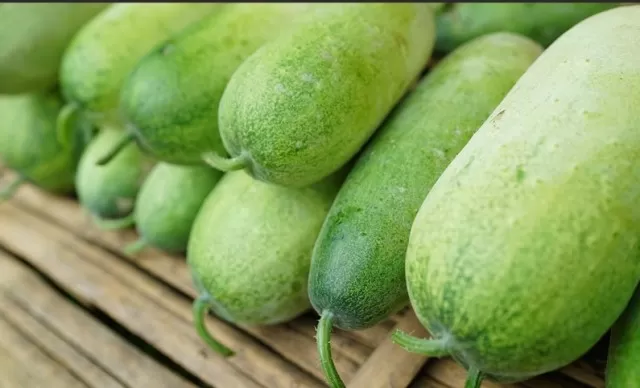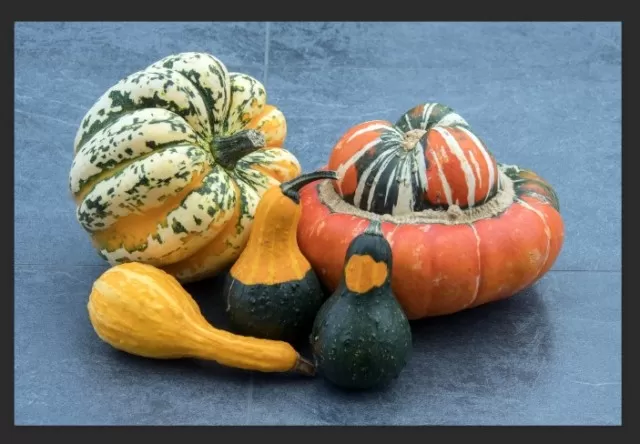Vegetable Garden Ideas. During the fall season, gourds take center stage as they grace our Thanksgiving tablescape and become integral components of craft projects for those picturesque harvest-themed porches. However, gourds are far more than mere ornamental decorations for the autumnal season. These durable, hard-shelled fruits have a rich history of serving various purposes, spanning centuries.
Intriguingly, gourds have been transformed into musical instruments, resonating with the melodies of time-honored tunes. They have also been fashioned into sponges, showcasing their remarkable versatility in everyday life. And, astonishingly, these unassuming gourds have served as the cozy abodes of birds, providing shelter and nesting spaces for our feathered friends over generations. Beyond their aesthetic charm, gourds stand as enduring symbols of utility, creativity, and the enduring connection between nature and human ingenuity.
Exploring the World of Gourds: Nature’s Unique and Versatile Creations

A gourd, as explained by Joe Masabni, PhD, a specialist in vegetables at Texas A&M AgriLife Extension Service, belongs to the Cucurbitaceae family, which is also known as the cucurbit family.
To put it simply, a gourd is a firm-shelled, inedible fruit that shares botanical ties with cucumbers, summer and winter squashes, and pumpkins.
Masabni also highlights the historical significance of gourds, tracing back their usage to ancient times.
Remarkably, gourds served as water bottles for early Egyptians over 4,000 years ago. They continued to play practical roles in various countries, serving as storage containers and utensils.
However, in the contemporary world, gourds have primarily transitioned into the realm of ornamental novelties, finding new purposes as birdhouses or adding a touch of charm as decorative elements, especially during Thanksgiving festivities.
Decoding the Gourd: Nature\’s Versatile and Historic Creation
Decoding the Gourd: Nature’s Versatile and Historic CreationAccording to the insights of Joe Masabni, PhD, a specialist in vegetables at Texas A&M AgriLife Extension Service, a gourd finds its botanical home within the Cucurbitaceae, or cucurbit family.
In simpler terms, a gourd can be described as a tough-skinned, inedible fruit that shares its plant lineage with cucumbers, as well as both summer and winter squashes, not to mention pumpkins.
Masabni’s historical perspective sheds light on the enduring significance of the gourd.
Remarkably, this plant species has a history dating back thousands of years, with early Egyptians utilizing gourds as water bottles as far back as 4,000 years ago. Across numerous nations, gourds have maintained their practicality, continuing to serve as reliable storage containers and essential utensils.
However, in our modern age, gourds have gracefully transitioned into new roles, primarily as objects of aesthetic delight.
Today, they are frequently employed as ornamental novelties, charming birdhouses, and captivating decorations that add a special touch to Thanksgiving celebrations.
Exploring the Diversity of Gourds: Beyond the Common Varieties

While you may be familiar with the gourds often found in craft stores and supermarkets during the fall season, it’s essential to recognize that these represent just a fraction of the vast gourd family.
Jessica Mercer, a content specialist at Plant Addicts, notes that there are a staggering 975 species of gourds, showcasing the remarkable diversity within this botanical group.
Among the numerous gourd species, some stand out as the more commonly encountered varieties.
These include:.
Bottle Gourds: Known for their elongated, bottle-like shape, these gourds are frequently used for crafting and decorative purposes.
Snake Gourds: As the name suggests, these gourds often have a sinuous, serpentine appearance, making them intriguing additions to gardens and culinary creations in some regions.
Apple Gourds: Resembling oversized apples, these gourds are often selected for their distinctive and appealing shape.
Nest Egg Gourds: These gourds, shaped like eggs, are not only decorative but also serve practical functions.
They are sometimes used as nesting sites for birds.
Penguin Gourds: With a silhouette resembling a penguin, these gourds bring a touch of whimsy and character to ornamental displays.
Furthermore, it’s worth noting that some “fall/winter” squash varieties and specialty pumpkins are occasionally referred to as gourds, adding to the complexity of gourd taxonomy.
Timothy Coolong, PhD, a professor of horticulture and vegetable extension specialist at the University of Georgia Extension, points out this interesting overlap in terminology within the world of gourds and squashes.
Gourds: Nature\’s Decorative Creations, Not Culinary Delights
In the world of fruits, gourds stand out as a unique category with a clear and straightforward distinction – they are not meant for consumption.
Joe Masabni emphasizes this point, stating that gourds are, by definition, non-edible fruits. Even with extended cooking methods like steaming or boiling, certain gourds, such as the Daisy gourd, remain unsuitable for consumption.
Timothy Coolong further clarifies the distinction by mentioning that while there are pumpkins, often referred to as “pie pumpkins,” that are indeed edible and suitable for culinary use, there are also hard-shell pumpkins that are better suited for decorative purposes, much like gourds.
So, when you encounter gourds in the grocery store, it’s important to recognize that they are primarily intended for decorative and ornamental purposes. For your pumpkin pie and other culinary endeavors, you’ll want to venture into the baking aisle to find the appropriate ingredients.
Cultivating and Harvesting Gourds: A Guide to Success

Growing gourds can be a rewarding endeavor, but it requires some patience and care due to their extended growing season.
Here’s a step-by-step guide to help you cultivate and harvest gourds successfully:.
Extended Growing Season: Gourds are a long-season crop, typically needing a minimum of 120 days to grow and mature.
Additionally, you should allocate an extra six weeks for growing transplants indoors. Keep this timeframe in mind when planning your gourd garden.
Planting and Care: Treat gourds much like you would pumpkins or other fall squash.
It’s essential to prepare nutrient-rich soil with ample organic matter before planting your gourd seeds. Incorporate fertilizer at the time of planting and when the first flowers appear, as recommended by Joe Masabni.
Trellising: Some growers opt to trellis their gourds to keep them off the ground.
This practice not only helps produce cleaner and higher-quality fruit, especially for smaller gourds, but it also can help protect the crop from certain pests. However, as mentioned by Timothy Coolong, trellising might not be suitable for very large gourds, such as kettle gourds that can weigh hundreds of pounds.
Pest and Disease Management: Gourds are susceptible to various pests and diseases, including powdery mildew, aphids, squash vine borers, and grasshoppers.
Regularly inspect your plants and take appropriate measures, such as applying organic or chemical remedies, to protect them from these threats.
Harvesting: You’ll know it’s time to harvest your gourds when their stems dry out and turn brown.
Gourd stems tend to be tough, so it’s advisable to have a pair of pruning shears or a sharp knife on hand to carefully cut them off.
By following these guidelines and providing the necessary care, you can successfully grow and harvest gourds, whether for decorative purposes, crafting, or any other creative uses you might have in mind.
*The information is for reference only.